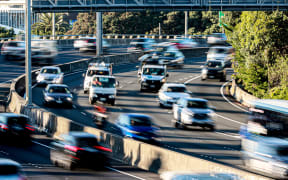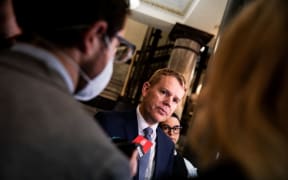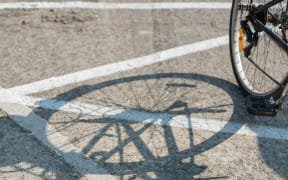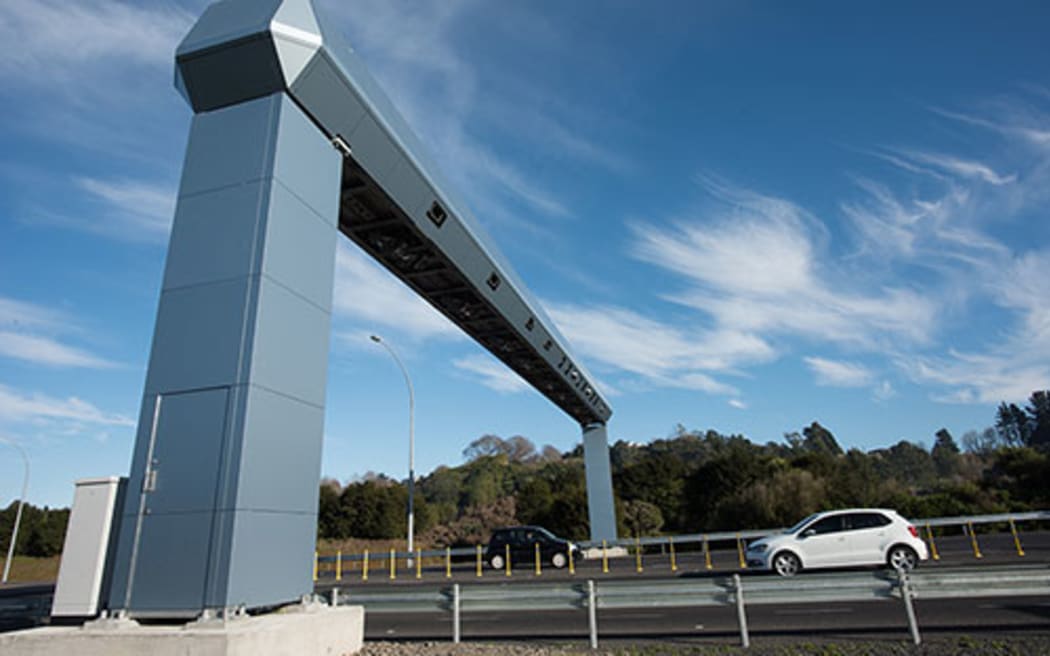
Photo: NZTA
Research shows the existing tolls - on just three highways - are low by international standards, at under $3 a trip.
The new government policy statement on land transport out on Monday puts more tolling firmly on the table.
It's a draft, and officials now have three months to report back on how to do it.
"The NZTA should consider tolling to construct and maintain all new roads, including the roads of national significance," the draft said. "The Government will support all recommendations by NZTA to toll roads."
One barrier was that the current tolling system was highly inefficient, swallowing a third of revenue just to run it.
NZTA Waka Kotahi embarked on a $40 million contract with a Spanish company, SICE, in 2022 to replace it - that work was orginally timed to be finished by mid-2023.
But on Thursday it said SICE "is no longer the provider for the back office solution".
Instead, it was working with billion-dollar Arizona company Verra Mobility, "and refining dates and costs associated with this complex implementation".
The system upgrade appears to involve retrofitting automated number plate recognition to at least some of the highway camera system.
The first of the new cameras would begin operating in "enforcement mode" - to ping speedsters - this year, it said.
The agency did not provide an updated budget.
Scott Wilson, of Milestone Solutions NZ, foresees more tolls within two-to-three years.
He said they might work on nine out of the new 15 roads of national significance projects also announced on Monday.
For a toll to work, a road must have few entry and exit points and there must be a alternative free route. The ones that were "motorway oriented" were best suited, Wilson said.
Mill Road - an on-again-off-again south Auckland four-laner - was not well suited, he said.
"Ōtaki-Levin might be suited to it, but the problem there is that that road is designed to take a lot of traffic off of a relatively unsafe existing road."
Tricky choosing which roads work for tolls
"It's going to depend upon the cost of installing tolling and the volumes of traffic to be able to recover enough revenue to make it worthwhile, and whether the travel-time savings that those roads generate are sufficiently worthwhile that people are going to willing to pay a toll," Wilson said.
Infrastructure Commission lead economist Peter Nunns said the Northern Gateway Orewa to Pūhoi toll worked because it saved a decent swag of time and was a nicer safer driver.
The toll for cars was just $2.60 - the only two other tolls are even lower.
"The tolls we've levied on them have covered a portion of the cost of the road, not the entire cost of the road," Nunns said.
"And the question going forward in an environment in which the cost to build infrastructure project is escalating, is can we actually get to a place where these things are more self funding."
A 2021 study showed tolls here were at just half those in Australia
Nunns said the only way to find out if people would pay more was to try.
Other options
On Wednesday Nunns attended a meeting of engineers about congestion charging, another user-pays option, which has been accepted in some places where it's used overseas.
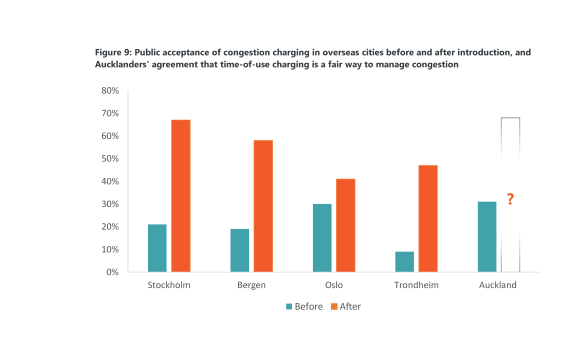
Public acceptance of congestion charging in four European cities before and after the implementation, alongside data from a New Zealand Infrastructure Commission survey showing Aucklanders' support for time-of-use pricing as a fair way of dealing with congestion. Photo: Supplied
The third funding option the government has ordered officials to do more work on, is road user charges for everyone.
Mark Heine heads up Eroad which has the GPS technology that can be put in all vehicles to enable this. He sounded a note of caution on tolls.
"Tolls can be quite a costly set up, and there's always usually ways to get around tolling in terms of alternative routes," he said.
"So using tolls has only a limited degree of efficacy around only key arterial routes really."


